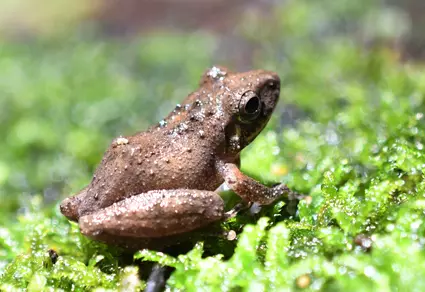Scientists discover Sri Lankan frog species in AP’s eastern ghats

Visakhapatnam: Scientists from the Zoological Survey of India (ZSI) and the Andhra Pradesh Biodiversity Board have identified a frog species native to Sri Lanka, the Brown Eared Shrub Frog (Pseudophilautus regius), in the Eastern Ghats of Andhra Pradesh.
This finding marks the second discovery of a Sri Lankan wetland frog species in this region.
The first Sri Lankan wetland frog species was sighted in Sri Lanka in 2005. Currently, the Eastern Ghats are known to host 28 amphibian species, as against the presence of 253 species in the Western Ghats and 455 across India.
Dhriti Banerjee, director of the Zoological Survey of India, emphasized the significance of the rediscovery. "We hope that this would lead to increased attention to the importance of biodiversity conservation of unexplored as well as all the protected areas of our country, specifically the permanent water bodies in human-habited landscapes and grasslands," she said.
The lead author of the scientific communication, Bharath Bhupathi, noted, "The Eastern Ghats is a treasure house for the scientific community, and this has significant implications for understanding the continental connection between Sri Lanka and India."
He emphasized the need for systematic exploration and documentation of amphibian diversity in the Eastern.
KP Dinesh, a phylogeny expert from ZSI, Pune, provided the historical context to the discovery. During the late Pleistocene period, approximately 10,000 years ago, there was a land connection with forests between the Indian mainland and present-day Sri Lanka. Intermittent sea-level changes, fluctuating climatic conditions and changes in the monsoonal regime have likely isolated the frog populations. “The species discovered in the Eastern Ghats could be relict populations from that era.”
To further explore the fauna of the Eastern Ghats, the Union environment ministry has proposed the establishment of a new regional centre of the ZSI, exclusively dedicated to this region.

